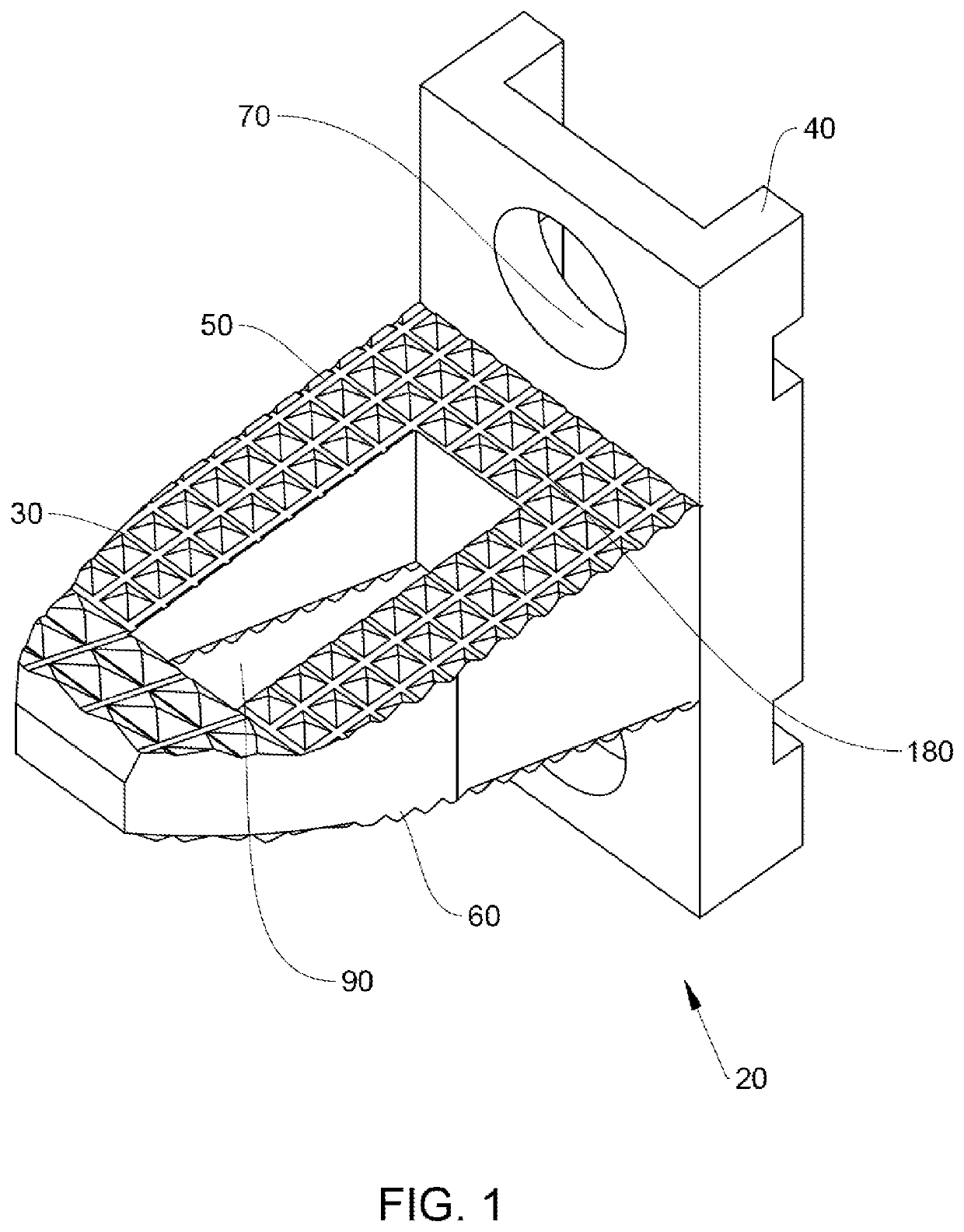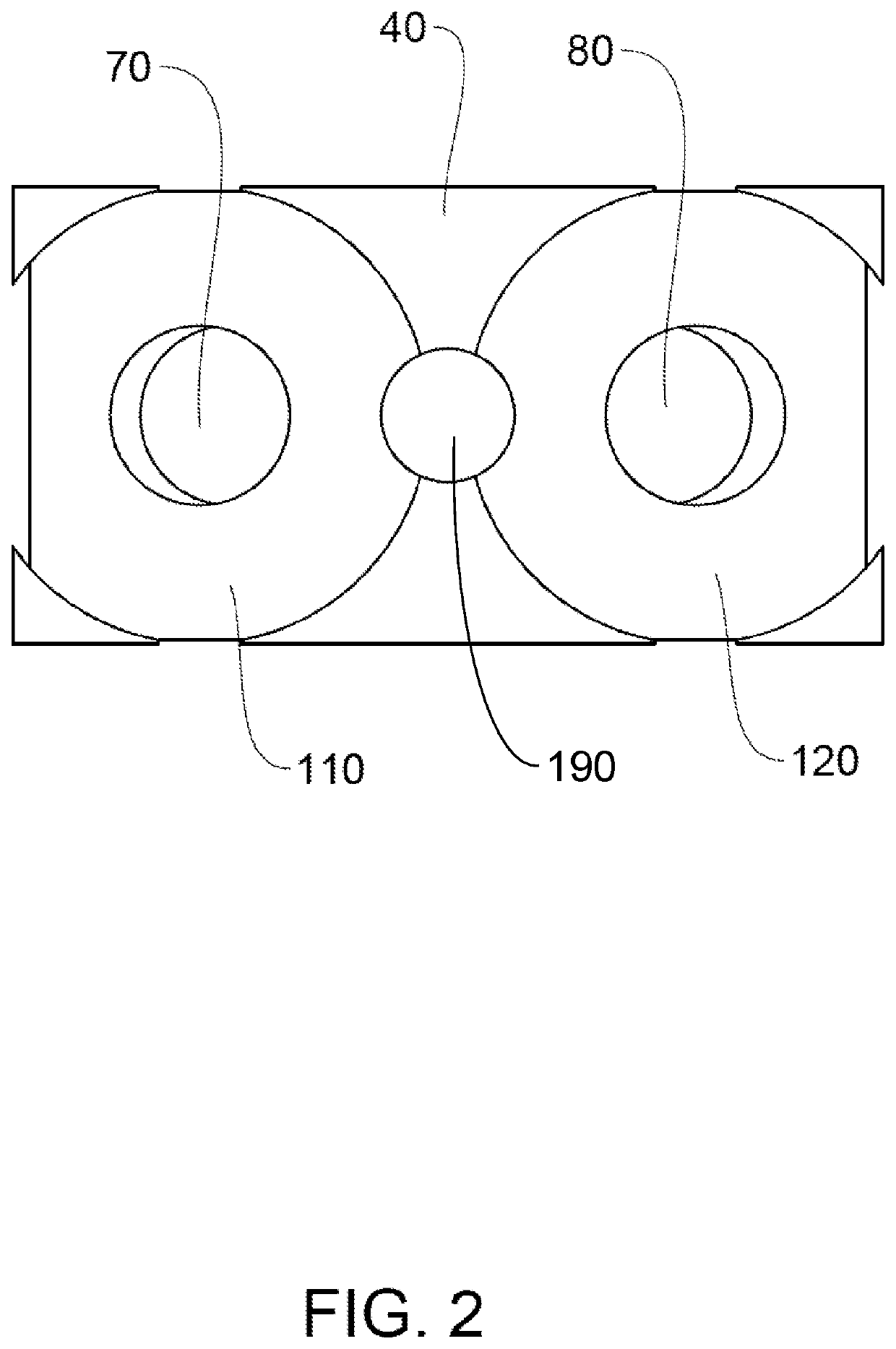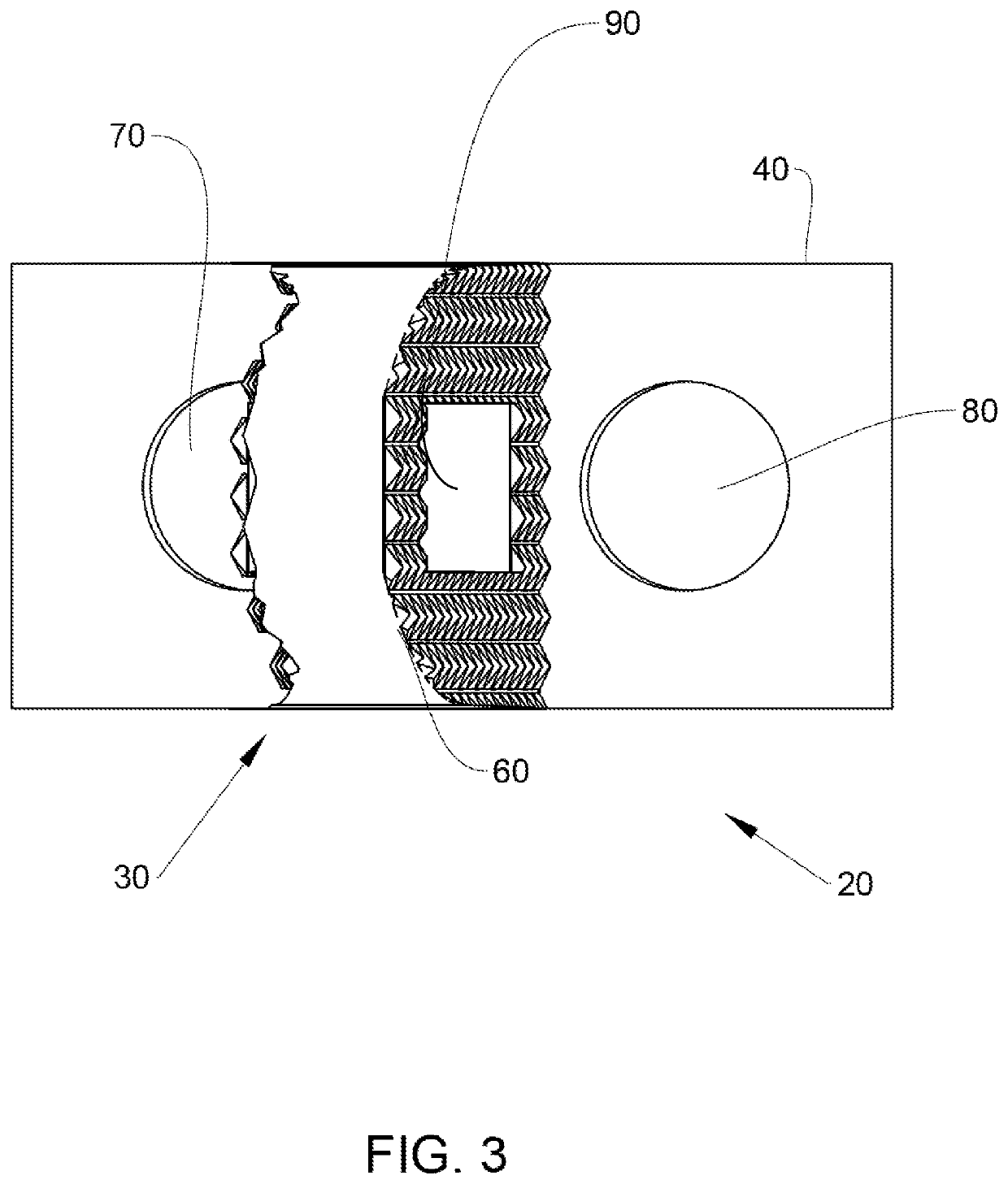Method and Device for Endoscopic Endonasal Occipitocervical Fusion
a technology of occipitocervical fusion and endonasal surgery, which is applied in the direction of osteosynthesis devices, internal osteosynthesis, internal osteosynthesis, etc., can solve the problem of lack of validated methods for endonasal o-c1
- Summary
- Abstract
- Description
- Claims
- Application Information
AI Technical Summary
Benefits of technology
Problems solved by technology
Method used
Image
Examples
example 1
[0074]The nasopharynx of a head specimen was approached using a binostril approach with removal of the inferior portion of the posterior septum. A 30 cm, zero-degree endoscope was utilized for visualization. An inverted “U-Shaped” myomucosal flap incision was used to create a flap which could be retracted for exposure of the O-C1 junction and C1-2 junction. The O-C1 joint was decorticated bilaterally using a 3 mm cutting ball bit. An implant system as shown in FIGS. 8 and 9 was inserted into each of the two joints until plate tight against the anterior aspect of the occipital condyl and the lateral mass of C1. A drill was used to create a pilot hole in the bone through an opening in the plate section of the implant. 22 mm screws were inserted through the plate openings using navigation to determine ideal trajectory.
Radiographic Analysis
[0075]A CT head scan was obtained after the procedure to confirm proper placement of implants and screws.
Biomechanical Assessment
[0076]The head speci...
PUM
 Login to View More
Login to View More Abstract
Description
Claims
Application Information
 Login to View More
Login to View More - R&D
- Intellectual Property
- Life Sciences
- Materials
- Tech Scout
- Unparalleled Data Quality
- Higher Quality Content
- 60% Fewer Hallucinations
Browse by: Latest US Patents, China's latest patents, Technical Efficacy Thesaurus, Application Domain, Technology Topic, Popular Technical Reports.
© 2025 PatSnap. All rights reserved.Legal|Privacy policy|Modern Slavery Act Transparency Statement|Sitemap|About US| Contact US: help@patsnap.com



